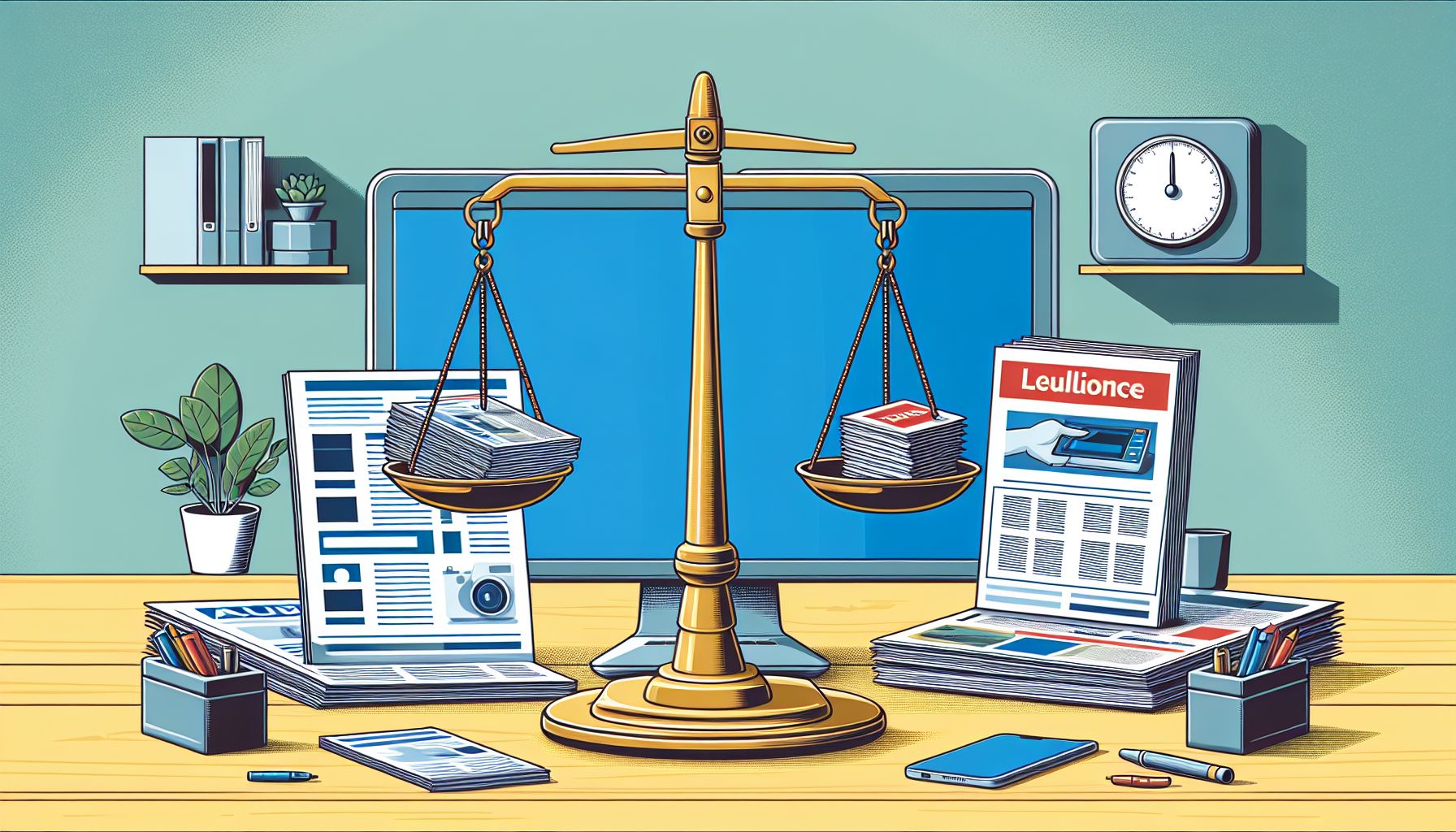In today’s rapidly evolving digital landscape, where online advertisements, email campaigns, and social media dominate the marketing world, it’s easy to overlook the effectiveness of traditional printed marketing materials. However, even amidst the rise of digital marketing strategies, the power of printed marketing continues to shine. From brochures and flyers to direct mail campaigns and business cards, printed marketing materials offer a tangible, personalized experience that digital channels often cannot replicate. In this blog post, we will explore the enduring value of printed marketing and why it remains a critical component of any comprehensive marketing strategy.
The Tangible Connection
One of the primary advantages of printed marketing materials is the tangible connection they create with potential customers. In today’s increasingly digital world, we are bombarded with countless online advertisements that can easily get lost in the noise. On the other hand, a well-designed brochure or flyer can catch someone’s attention and hold it in a way that a fleeting online ad simply cannot.
Printed marketing materials allow individuals to physically interact with the content, engaging multiple senses and creating a lasting impression. Whether it’s flipping through a high-quality catalog or feeling the texture of a business card, the tactile experience provides a deeper connection that stays with the recipient for longer.
Credibility and Trust
In an era where online scams and phishing attempts are becoming more prevalent, the trustworthiness and credibility of a business play a crucial role in attracting and retaining customers. Printed marketing materials contribute to building trust and credibility in several ways.
Firstly, physical materials are often associated with established businesses that have invested time and resources into producing quality marketing collateral. Holding a professionally designed brochure or receiving a well-crafted direct mail piece can signal legitimacy and reliability to potential customers.
Secondly, printed materials allow for the inclusion of visual elements such as logos, certifications, and customer testimonials, all of which can bolster a company’s reputation. By showcasing partnerships, awards, or positive feedback, printed marketing materials build credibility and instill trust in a way that digital advertisements often struggle to achieve.
A Personalized Approach
While digital marketing provides countless opportunities for reaching a broad audience, it often lacks the personal touch that printed materials can offer. Personalization has become a key element of successful marketing campaigns, and printed materials allow for individualized messaging in ways that digital channels find difficult to replicate.
For instance, when designing a brochure or a direct mail campaign, businesses can tailor the content specifically to the target market, including personalized names, addresses, and even customized offers. This level of personalization sends a clear message to potential customers that they are valued and that their needs are understood.
Furthermore, printed materials can be strategically placed and distributed, providing a physical presence that fosters a sense of connection and belonging. Placing a stack of informative pamphlets at a coffee shop or distributing postcards at local events allows potential customers to discover and engage with a business in a more intimate, personal way.
Extended Reach and Engagement
Printed marketing materials offer a multitude of opportunities for extended reach and increased engagement with potential customers. Unlike digital advertisements that can be easily ignored or dismissed, printed materials have a physical presence that demands attention.
With the advancement of technology, businesses can seamlessly integrate printed materials with their digital strategies, amplifying their reach and gaining the best of both worlds. Including QR codes or personalized URLs on brochures or postcards, for example, can drive traffic to a company’s website or social media channels, allowing for further engagement and relationship building.
Moreover, printed materials can be shared among friends, family, and colleagues, extending their reach beyond the initial recipient. This pass-along effect can significantly increase brand exposure and generate word-of-mouth marketing, creating a ripple effect that expands a company’s visibility and attracts new customers.
Balancing the Digital and Physical
While it’s clear that printed marketing materials still hold significant value, it’s essential to strike a balance between digital and physical channels. In today’s interconnected world, digital marketing strategies provide unparalleled reach and targeting capabilities. However, by integrating printed materials into a comprehensive multichannel approach, businesses can maximize their impact and create a holistic marketing experience.
Instead of viewing printed and digital marketing as separate entities, businesses should aim to align their messaging and design elements across various mediums. Ensuring brand consistency and synergy between online and offline materials fosters a cohesive customer journey, wherein printed pieces complement and reinforce digital communication.
By thoughtfully integrating printed marketing materials with digital strategies, businesses can amplify their message, extend their reach, and cultivate a vibrant marketing ecosystem that captivates and engages audiences across different touchpoints.
In Conclusion
In a time when the digital marketing landscape dominates conversations, the tried and true power of printed marketing materials should not be underestimated. From creating a tangible connection with potential customers to instilling trust and credibility, personalized materials possess unique advantages that digital channels often struggle to replicate.
By harnessing the benefits of printed marketing and effectively combining them with digital strategies, businesses can create a comprehensive marketing approach that maximizes reach, engagement, and effectiveness. In a world inundated with digital noise, printed marketing materials remain a valuable asset in capturing attention, fostering connections, and ultimately driving business growth.
